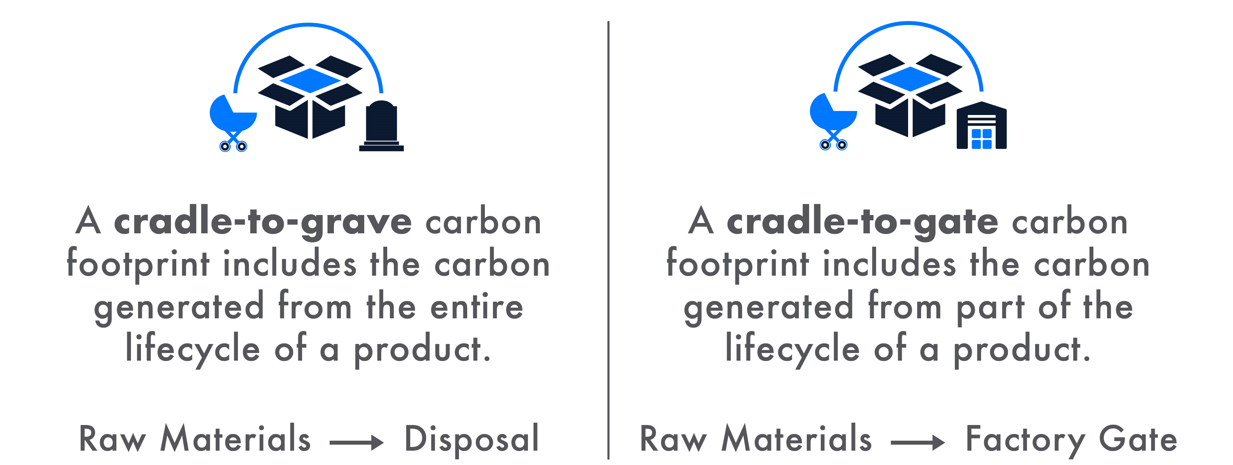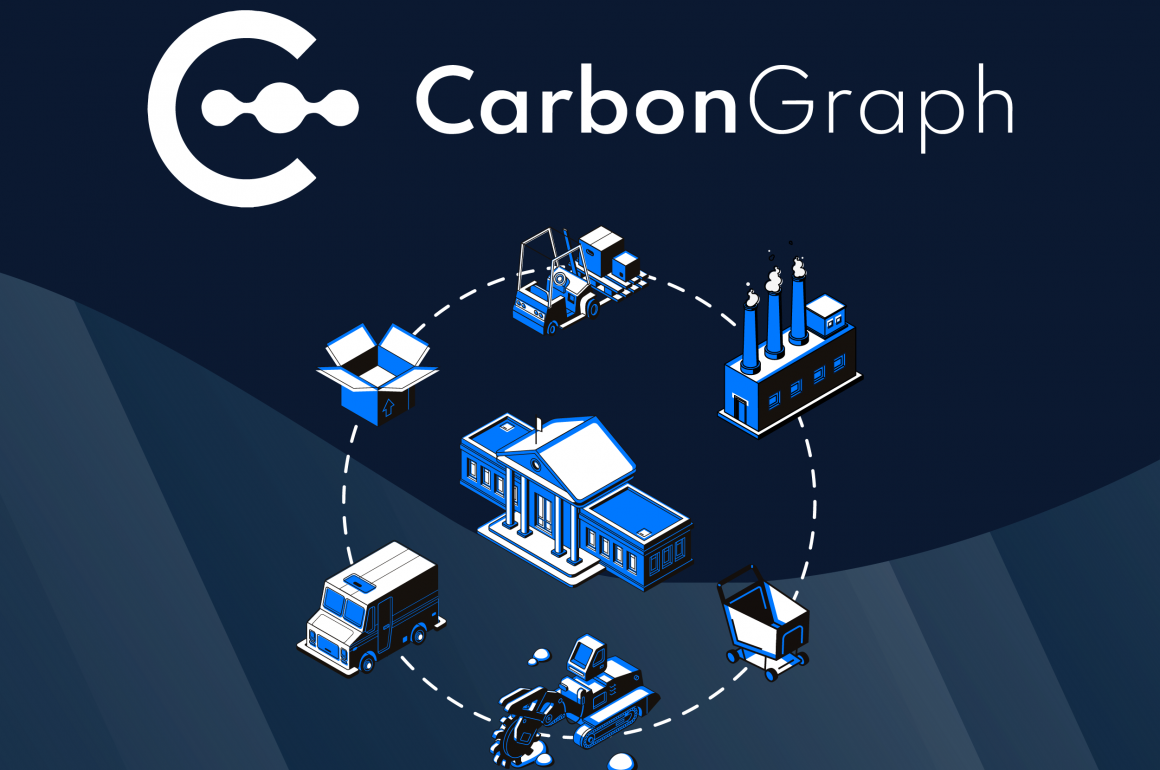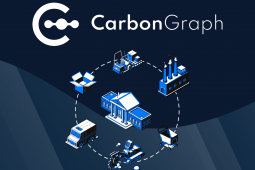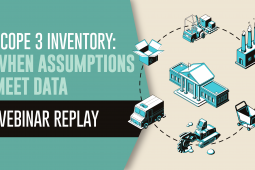Climate change is one of the most important environmental issues of our time. As humans, we cannot continue our current path, and must make a drastic and impactful change. A carbon footprint is the total amount of greenhouse gases, including but not limited to carbon dioxide and methane, that are generated through our actions, activities and products. More specifically, a product’s carbon footprint measures the total amount of greenhouse gas emissions through its lifecycle – from raw material extraction and production to its final use by consumers. But how do we calculate these? Let’s take a look!
What is a Life Cycle Assessment?
Life cycle assessment (LCA) is a methodology used to evaluate the environmental impacts of a product or system throughout its entire life (including disposal and recycling at the end of life).

Stages of the Life Cycle Assessment.
What is a Life Cycle Product Carbon Footprint?
A life cycle product carbon footprint is the total amount of greenhouse gases emitted over the complete lifecycle of a product. This includes every emission producing activity from the extraction of raw materials, through production of intermediate and final goods, through distribution & storage, through product use, and finally to product disposal.
Cradle-to-Grave vs Cradle-to-Gate
A Cradle-to-grave carbon footprint includes the carbon generated from the entire lifecycle of a product. A cradle-to-gate carbon footprint includes the carbon generated from part of the life cycle of a product (ie. Raw materials to factory gate). At Busch Systems, we are proud to model all our products from cradle-to-grave!

Cradle-to Grave versus Cradle-to-Gate.
What is the Greenhouse Gas (GHG) Protocol?
The Greenhouse Gas Protocol is a globally standardized framework that allows for consistency in how companies measure and manage greenhouse gas emissions. Greenhouse Gas Protocol sets the standards to measure and manage emissions and is the world’s most widely used greenhouse gas accounting standards for companies. You can view the product lifecycle accounting and reporting standard here.
Understanding Scope 1,2 and 3 Carbon Emissions
The GHG Protocol outlines scope emissions. The three scopes are a way of categorizing the different types of greenhouse gas emissions created by a company, its suppliers, and its customers.
Scope 1 emissions are those that are direct emissions, owned or controlled by a company. For example, from burning fuel in the company’s fleet of vehicles (if they are not electrically powered).
Scope 2 and Scope 3 emissions are indirect emissions that are a consequence of a company’s activities but occur from sources not owned or controlled by it. An example of Scope 2 emissions would be the emissions caused by the generation of electricity that’s used in the company’s buildings. An example of Scope 3 emissions would be when the company buys, uses and disposes of products from suppliers.
Outcomes and Future Steps
Once you have collected all your data, then what? There are three main levers for a company to pull to reduce their carbon footprint:
1. Reduce their own scope 1-2 emissions
2. Reduce their scope 3 emissions; the vast majority of emissions occur in a company’s supply chain
3. Carbon offsets
What is Busch Systems Doing with Our Product Carbon Footprint Information?
The first key outcome of our partnership with CarbonGraph is the opportunity to make meaningful environmental improvements. By tracking our carbon footprints, we are now able to pinpoint specific areas within our supply chain where we can most effectively reduce emissions. Quantifying our sustainability initiatives allows us to refine and set intentional sustainability goals for meaningful climate action and we plan to continue to work with our suppliers and our research and design team to make effective improvements and reduce scope emissions wherever possible. You can follow along our journey here.
Customer Empowerment
In addition to opportunities for environmental improvements, another key outcome from the mapping of the carbon footprint of our products is how the information we have gathered can empower our customers and partners. Transparency allows our customers to use this information if they are tracking their own scope 3 emissions, or if they simply want to make sustainable choices.
***
Additional Resources
Busch Systems Product Carbon Footprint
Decoding the Product Carbon Footprint, a blog post by Andrew Sheahan























